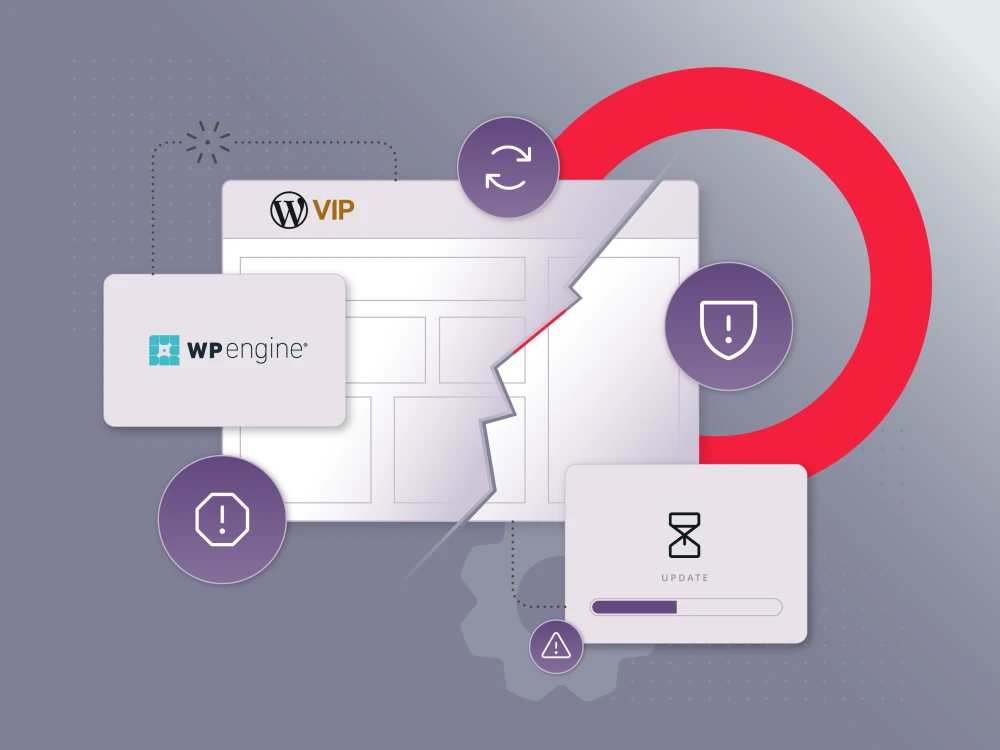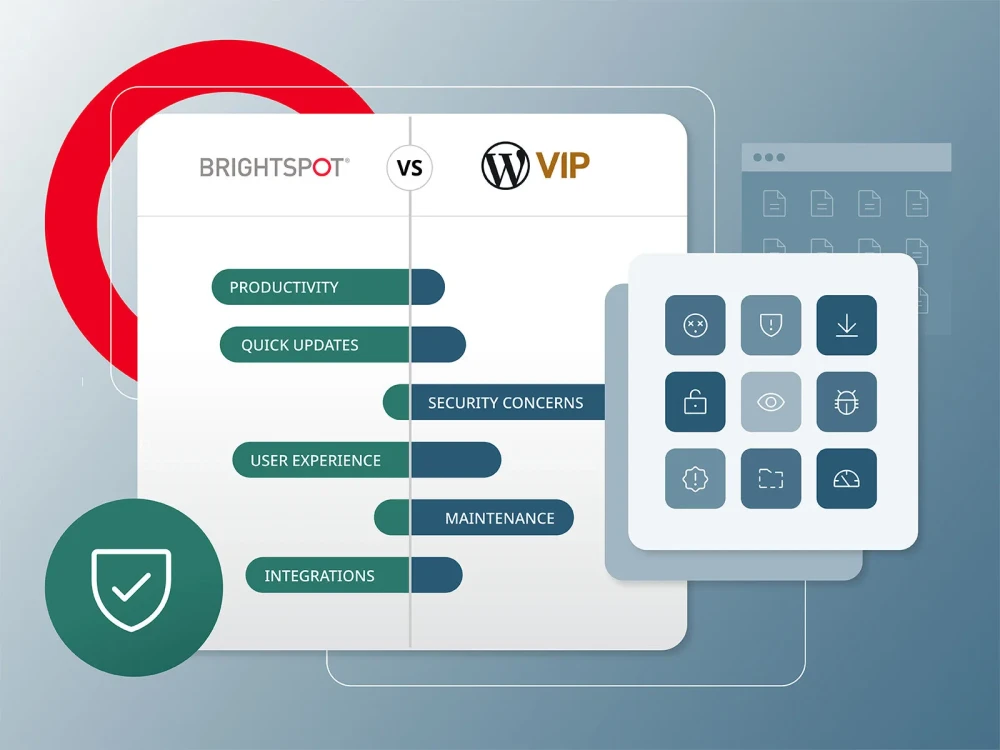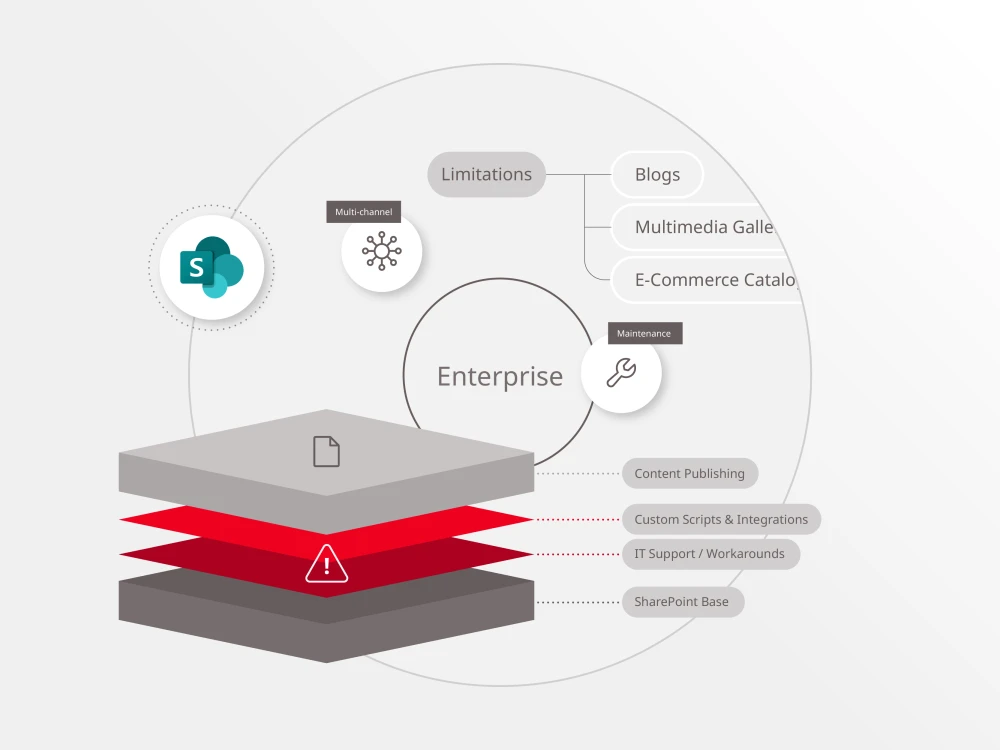A new generation of content management systems has transformed the market, although many organisations remain unaware of this quiet revolution and the benefits these new advanced systems offer.
In their discussion on the topic of enterprise content managment — “The enterprise content management revolution” — David Gang, CEO and Co-founder at Brightspot, and Dion Hinchcliffe, VP and Principal Analyst at Constellation Research met to evaluate what the landscape looks like and what the future holds.
What we are seeing is that advanced content management systems have very high levels of third-party integrations. Content is no longer a siloed activity —i t is connected to all your other digital systems.
Enterprise content management: A market reimagined
Many commercial organizations have fallen into the trap of believing that content management systems have reached a point of static maturity.
But the reality is that a new breed of advanced content management system has been developed, and the technology dramatically changes the scope and scale of what users can achieve. It also compresses the timeframes and budgets associated with even the most sophisticated projects.
Dion is in no doubt about the commercial advantages the new systems give users.
“Advanced content management is changing quickly,” he says. “Most people look at content management systems as mature entities that are not advancing—they are, and quickly.”
“They provide capabilities that most organizations really need to compete in the 2020s and if you are using the old stuff, you are spending way too much money and taking too much time. People using advanced management content systems will run circles around you.”
So, what has changed for enterprise content management?
Perhaps, the biggest development is the creation of systems that have a headless architecture and the ability to keep content assets independent of the end points where they are published.
Taking a moment to explain what headless architecture means, David Gang noted during the discussion: “I think the way that you have to look at headless technology is that it is a true separation of the source of content — otherwise known as the back end — from the front end that you are delivering to, whether that is a website, an OTT app or syndication.”
The point with headless is that from one master content hub you can make all your content changes and publish it however you want, on any constellation of touch points. We are enabling customers to take information from different sources, work on it within Brightspot and then send it to different endpoints.
In addition, adopting a modular approach to content assets enables advanced content management systems to break each asset down into small pieces — modules — enabling it to be modified as required and then distributed to any endpoint.
As David puts it, the idea with modular content is to give the marketer the ability to deliver the right message to the right consumer and endpoints as easy as possible. The complication should be on the technology side — not on the CMS user — and Brightspot makes it simple for both parties. “We ensure the technology makes it easier for customers to do their job and to deliver more targeted messages with complete control,” he explains.
The result is that users have one content asset which is broken into many different modules, and these can be tweaked or tailored to make the content more relevant to different audiences, whether they be in different countries or on different devices.
The enterprise content management future: Increased capabilities and speed at reduced cost
Another significant characteristic of advanced content management systems is the number of third-party integrations that can be supported, which generate huge benefits for users.
For example, if an organization needs to publish data to different audiences in different languages, integrations with translation providers enable this in different ways. Either, users can choose to have the original text translated and published immediately, or they can have an editor check the translated text for accuracy before publication.
Brightspot has one customer that publishes content in 170 languages. Dion comments: “That would be an enormously complicated and expensive task using traditional language translation services, but advanced content management platforms like Brightspot bring language translation right in and bring a workflow to it so that it happens easily.”
These new advanced systems also deliver a massive reduction in development time and cost.
Dion adds: “All the capabilities provided by advanced content management systems provide a 10-to-1 reduction in development cost and time, so what would ordinarily take ten months takes one month on these platforms. It changes the art of the possible.”
Imagine what sort of an impact that could make on your organization’s commercial performance. If you would like to find out more about some of the features that help large enterprises manage their content needs, read on!
Decoupled and headless content management offers the best flexibility and ease-of-use.
Unlike legacy content management systems like WordPress, today’s decoupled and headless CMSes separate the front-end, that is—the website and what the user sees from the back-end, or where the content is developed, stored and distributed. This separation allows brands and organizations to distribute the content across multiple channels from one central place of production, creating a consistent and engaging omnichannel user experience.
Nowadays, if you don’t want to rely on developers to change coding each time you shift your marketing strategy, a headless CMS offers that flexibility. For instance, retail giant Walmart integrated Brightspot into its technology stack to create and distribute content across over 15 global websites in different languages. Social-media integrations helped engagement with the company’s worldwide network. The team manages 70,000+ pieces of content and realized a boost of 115% in web traffic.
Pre-built and custom integrations support speed, security and stability.
Plug-and-play integrations can add functionality and useful features to your CMS without relying on developers. That saves time and money and makes it easy for your team to publish and distribute content faster. Some of the features you should look for include search tools linked to multiple stock art publishers, translation services for multisite publishing and tagging to aid search engine optimization, discoverability and personalization. Another major benefit from a library of CMS-supported integrations is that you don’t have to worry about the versioning, security and stability of your various business-critical tech and marketing integrations.
Personalization and analytics are the heartbeat of any enterprise content platform.
Today’s consumers want a personalized experience from e-commerce companies and their favorite brands. In recent research, 74% of customers said they feel frustrated when the content delivered on their favorite brands’ website is not personalized, and 71% of consumers want a personalized shopping experience.
Your CMS should deliver extensive personalization capabilities and analytics that allow your marketing team to track results. You should be able to set your target audience based on multiple factors, including data points like purchase history, location and user devices.
Create once and publish everywhere with a dynamic modular-content approach.
Personalization across channels often means creating new content for each user base. For instance, a mobile user may require short snippets of text and a quick video, while a desktop user could benefit from a product gallery and more in-depth text on the screen.
Modular content creation capabilities allow your creative team the freedom to take blocks of text, images, videos and even data collection forms and repurpose them across channels where they can have the most impact. You can quickly and easily create a brand story that is consistent, engaging and memorable.
Protect your business, brand and bottom line with a trusted enterprise CMS the guarantees security and privacy.
Even as they collect anonymous data for a personalized experience, organizations have a responsibility to their shareholders, partners and customers to protect consumer privacy and to maintain a secure site.
Your IT and cybersecurity teams want to know your CMS is not going to put the company at risk of a distributed denial-of-service attack or an cybersecurity risk that can put your business out of commission for hours—or days—and cost your company millions of dollars
Research has shown the headless CMS solutions are inherently less susceptible to a distributed denial-of-service (DDoS) attacks. The use of APIs in a headless CMS leaves the processing to the client side, which means the server won’t feel the effects of the attack as strongly, since less processing power is required. It doesn’t mean that your CMS or site is impervious to attack, but it helps improve the odds of emerging unscathed.
Additionally, features like two-factor authentication, defined user roles and permissions that you can easily change and being able to lock crucial content such as brand assets can help your IT team further protect the CMS from attack.
For larger organizations with multiple sites, a CMS that is secure, flexible and easy to use is a crucial element to boosting web traffic and increasing productivity across national, or even global, teams. Today’s technology offers more ways than ever before to deliver a personalized, friendly user experience. The right CMS helps you make the most of today’s marketing tools.









